Sony A1 is a 50MP full frame mirrorless camera designed to impress photographers and videographers.
A1 enters the market as a second camera with 8K video recording capability. And at the same time, it gets a lot of improvements and niche features from the A7R, A9, A7S and FX series cameras.
Available to buy online on:
- Amazon
- BH Photo Video
- Adorama (financing may be available)
George Politsarnov, a Russian expert from ProPhotos, received one of the Sony a1 pre-production samples for preparation of a large test in the “Week with an expert” format.
This field test/review will be an extensive one. George created a truly in-depth review of Sony Alpha 1 (originally published in Russian on ProPhotos.ru) that will answer most of your questions that you probably had.
So, grab a coffee and enjoy!
Sony a1 Key Features (Overview)
Sensor
At the heart of the Sony A1 is the 50-megapixel Exmor RS full-frame sensor, built with proprietary multi-layer technology.
In addition to the photosensitive layer, the sensor has a separate layer for DRAM memory. And there is also an ADC (analog to digital converter). This is done to ensure a high reading speed.
The developers don’t disclose other details, but the advantages of such an architecture are perfectly illustrated by the record speed characteristics.

The Sony A1 can shoot up to 30fps in 12-bit RAW at 50MP full resolution while maintaining AF and AE performance. Naturally, we are talking about an electronic shutter.


Settings: ISO 640, F5.6, 1/3200s, 600mm equiv.
The mechanical shutter is used at speeds of up to 10 frames/s. By the way, in this model the mechanical shutter became very quiet. It works with a barely audible click and doesn’t create body vibrations.
Sony’s fast sensor readout technology was used in the A9 and A9 II. Recall that they use similar multilayer sensors, which allow the use of an electronic shutter with virtually no restrictions.
Even the blades of a combat helicopter moving at high speed are not distorted when shooting with an electronic shutter:

Settings: ISO 400, F5.6, 1/3200s, 400mm equiv.
Even very dynamic scenes don’t provoke distortion in the frame.
The Sony A1 inherits this unique trait along with its sensor architecture. The manufacturer claims that the Sony A1 has a 1.5-fold advantage over the Sony A9 II in terms of distortionless shutter operation.

Settings: ISO 320, F5.6, 1/1000s, 400mm equiv.
Of the not-so-obvious technological breakthroughs, we note that with such a fast continuous shooting, the camera is also capable of performing “service” measurements: up to 120 exposure and autofocus measurements per second.
And the image in the digital viewfinder is displayed without dimming, that is, between frames, the camera also takes pictures for display on the screen. (By the way, the maximum refresh rate in the viewfinder is 240 fps! This is important for fast action and tight framing.)
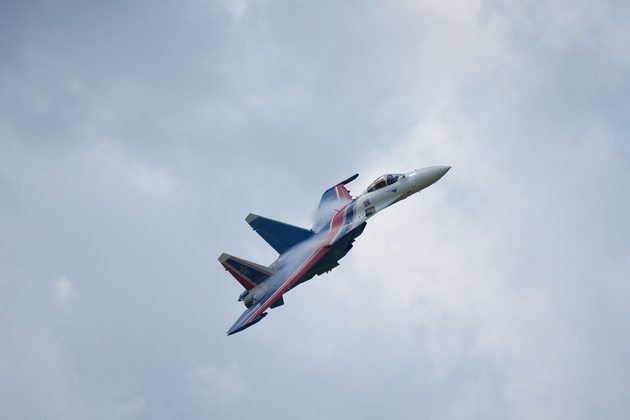
A striking example of high read speed is the ability to shoot with flash and electronic shutter at a sync speed of 1/200s! At the time of this writing, this characteristic of the Sony A1 is unique. When switching to mechanical shutter, sync speed drops to 1/400 for full frame and 1/500 for APS-C area.

The anti-flicker function is also based on the high read speed.
The Sony A1 was the first camera capable of “adjusting” to high-frequency flicker from a light source when operated with an electronic shutter. This is especially true for sports and reportage photographers working in spaces where silence is required.
Sony A1 allows you to work absolutely silently without losing important functions. The electronic shutter works out shutter speeds up to 1/32000s, which opens up really wide possibilities for using high-aperture lenses without thinking about illumination.

Paired with the sensor, two BIONZ XR processors work at once. We don’t know much about them, only an 8x performance advantage is reported over the previous generation BIONZ X.
8K Video
The 8K video is like icing on the cake. If the camera can take photos at a speed of 30 frames/s, then it can take videos with the same frequency.
The Sony A1 can record 10-bit 4: 2: 0 video in 8K to a memory card at up to 25/30 fps. Recording is carried out with a bit rate of 200 or 400 Mbps.
The advantage of this solution is the simplicity of building a workflow. Even a V90 class SD card will work for 8K shooting. No external recorder or expensive CFexpress cards needed.
There are also many options for 4K recording, such as up to 120fps. We will discuss the intricacies of video filming later in the test.
Stabilization
Sony doesn’t intend to abandon the stabilizer in full-frame mirrorless cameras, because it was they who first proposed this solution.
The stabilization system is based on sensor shift. It compensates for vibrations along five axes and is able to provide a gain of up to 5.5 stops according to the developer’s data.
Hybrid AF System
The Sony A1 uses a hybrid autofocus system. During photography, up to 759 points of phase detection on the sensor are used. They cover 92% of the frame area.

The company is developing autofocus in its cameras from model to model.
Real-time tracking functions, eye AF for people and animals are already a given. Sony makes extensive use of machine learning technologies to ensure that cameras accurately recognize the main subject in the frame and track it with confidence.

Settings: ISO 100, F1.4, 1/6400sec, 35mm equiv.
For example, the developers estimate the advantage in the accuracy of autofocus on the eyes of the Sony A1 over the previously released Sony A9 II at 30%. And the Sony A1 also offers a further development of technology in the form of autofocus for the eyes of birds.

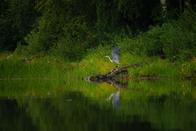


Settings: ISO 1000, F5.6, 1/800s, 400mm equiv.
Viewfinder: It Surprises
The fact that the viewfinder of the Sony Alpha 1 is large can be seen even from the side.
Its magnification ratio is 0.9 at 100% coverage of the frame area. This is more than top-end DSLRs. The viewfinder is built on an OLED sensor with a resolution of 9.44 million pixels, which is also an unattainable characteristic for competitors.
But it has another trump card – the highest refresh rate, up to 240 frames/s.

The Sony A1 has many unique features, but we suggest you get to know them after more detailed testing. Keep on reading!
Image Quality
High ISO and Noise
The sensor in the Sony A1 has never been seen anywhere else (at the time of this writing).
Therefore, we will not drag out the intrigue. We wait until sunset, put the camera on a tripod and shoot a series of shots at all ISOs! Let’s see what the 50 most modern megapixels are capable of?

Settings: ISO 50, F8, 8s, 166mm equiv.
We start from ISO 50. This is an expandable value, so you should expect losses in highlights.
The real ISO range starts at 100 units. The detail is very high. You can enlarge the image by 100% and examine the texture of the walls, road signs, individual signs on the station building. Even interior elements can be seen in the windows of the office center behind the station.
Sony A1 is the case when 50 megapixels are fully revealed. The contrast is high, the colors are bright and saturated. The image is absolutely smooth without noise. Ideally high quality is maintained up to ISO 400.
Starting from ISO 800, the contrast of monotonous and low-light areas is gradually reduced, and small brightness noise appears in the shadows. The detailing doesn’t suffer in this case.
ISO 1600 adds another drop of the smallest noise in the shadows. It is possible to talk about the beginning of the degradation of halftones in the shadows only starting from ISO 3200. Nevertheless, the overall technical quality of images remains high and sufficient for printing in a very large format.
At ISO 6400, the shadows get a little dirtier. But in general, this ISO value is completely working. For example, many amateur cameras give such a picture even at relatively low ISOs.

Settings: ISO 5000, F1.8, 30s, 14mm equiv.
Even at high ISOs, raw files can be corrected quite heavily.
It is worth thinking about choosing a print format when using ISO 12800: at maximum magnification, due to monochrome noise, the image no longer looks smooth, halftones in the shadows are lost. At lower magnifications, the detail remains very high and the picture looks almost perfect.
ISO 25600 completes Sony A1’s winning streak. The camera still doesn’t give up in terms of detail, but due to the decreased contrast in the shadows, it won’t work to print large such frames. A reasonable limit for this sensitivity value is A3 format. Publishing on the network and social networks – no problem, there will be enough quality reserve.
All this is true for the maximum value of the real ISO range – sensitivity of 32000 units.
ISO 51200 and ISO 102400 are expandable values. Here the picture begins to “crumble”: the detail is sharply reduced, the contrast in the shadows is finally lost. Such images are of limited practical use, but certainly not in their original resolution.
We must admit that the Sony A1 was able to surprise us. Thanks to the delicate work with shadows, as well as a huge reserve of detail, the sensor and a pair of processors make the entire real ISO range workable – from 100 to 32000 units. And this at a resolution of 50 megapixels!
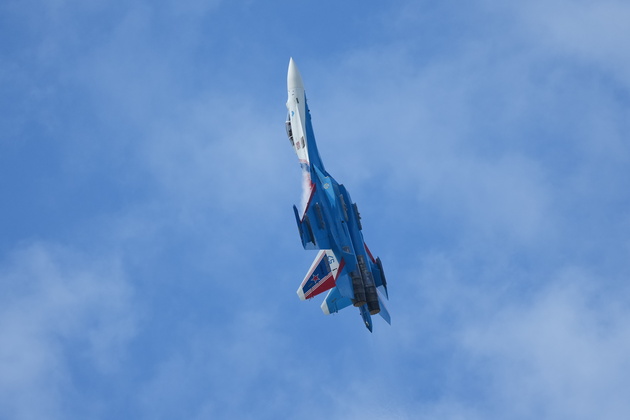
Settings: ISO 640, F5.6, 1/3200 s, 450.0 mm equiv.
If there isn’t enough zoom of the lens, the bonus in the form of a stock of resolution can be “cashed out” right during the shooting. We transfer the camera to Super-35 mode (APS-C crop) and we get 21 megapixels, which is quite sufficient for reporting. A number of frames in the test were shot in this way.
The Color of the Images
The Sony A1 handles color very neatly, avoiding blockage in any shade when automatically setting the white balance. Subjectively, it seems that the color reproduction is different from previous Sony models.
The images look cleaner. There are no complaints about saturation.
The colors are bright, not “diluted”. I don’t want to edit anything in the editor. The camera renders exactly the shades that were during the shooting.

Settings: ISO 100, F1.4, 1/5000 sec, 35.0 mm equiv.
Dynamic Range
Sony A1 allows you to draw shadows boldly within two stops or with subsequent minimal noise reduction up to 3 stops. It is possible to go harder, but the brightness noise will climb, and new details will no longer appear.
The numbers are not record-breaking, but they are very solid for 50-megapixel cameras.
There is also a margin in the highlights, not bad even without reference to high resolution. One and a half steps can be pulled out of overexposures for sure. Depending on the scene, you can drag up to 2 steps, but often this does not lead to the appearance of new details.
Autofocus
The Sony A1 uses hybrid AF for focusing. The camera operates with 759 phase detection points that cover 92% of the frame area. They are assisted by 425 contrast AF points. Recall that automation uses both principles at the same time to ensure speed and accuracy.

Settings: ISO 500, F5.6, 1/800 s, 400.0 mm equiv.
Autofocus sensitivity ranges from -4 EV to 20 EV. A sensitivity of -4 EV is sufficient for professional photography. At dusk and even in the dark, the camera works confidently.

Settings: ISO 100, F8, 3 s, 34.0 mm equiv.
A high upper limit of sensitivity can sometimes be even more important. It determines how backlit autofocus works. And here we want to praise the Sony A1: in harsh lighting conditions, focusing works confidently, and automatic controls keep the subject in sharp focus.

Settings: ISO 100, F5.6, 1/1000 s, 400.0 mm equiv.
Naturally, for a camera of such high level, talking about focusing speed when shooting time-lapse is not serious. Everything is all good in this department. There is no problem with manual selection of the AF point. To do this, you can use a joystick or touch screen.
But the strength of the Sony A1 lies in its automatic AF area detection!

Settings: ISO 100, F1.2, 1/640 s, 50.0 mm equiv.
We are familiar with eye AF from past Sony models. They confidently recognized the eyes of humans and animals.

Settings: ISO 400, F1.4, 1/40 s, 35.0 mm equiv.
The Sony A1 has also added bird-eye autofocus. The camera focuses not on the bird’s beak or head, but on the eye. We care about the photo hunters! You don’t need to select a point manually. Smart algorithms built with machine learning do it for the photographer.

Settings: ISO 1250, F5.6, 1/400 s, 400.0 mm equiv.
There are no problems with animals or people. If it’s large enough, the focus will be on the eyes. As the subject gets smaller, priority will be given to the face, head, or figure.
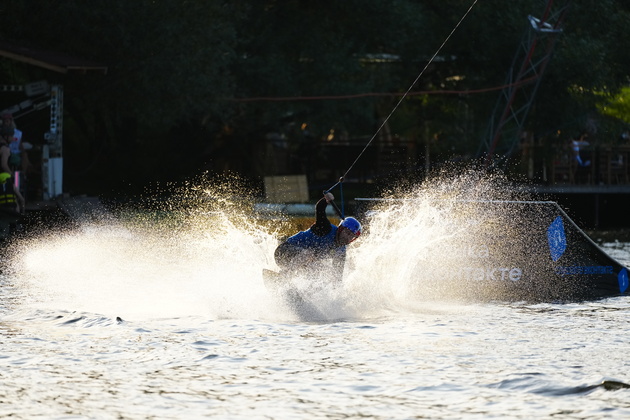
Settings: ISO 800, F5.6, 1/1600 s, 400.0 mm equiv.
For autofocus, it is not difficult to grab the athlete against the general background and keep him in focus, practically without getting lost.
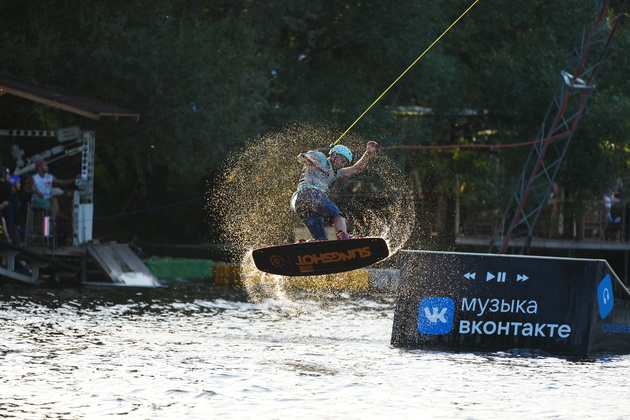
Settings: ISO 2000, F5.6, 1/1600 s, 400.0 mm equiv.
This applies to almost any scene significant objects.
For example, birds in the background of a forest are also unmistakably recognizable. And only branches and grass in the foreground can confuse the autofocus. At the same time,AF doesn’t go astray on single obstacles such as a tree or a pillar, continuing to guide the main subject.

Settings: ISO 320, F5.6, 1/800 s, 400.0 mm equiv.
All of this virtually eliminates the need to work with AF point selection. For high speed shooting, this is not a luxury, but rather a harsh necessity.

Settings: ISO 640, F5.6, 1/3200 s, 262.0 mm equiv.
However, if the task is to unambiguously make it clear to the AF system what exactly needs to be kept in focus, you can use real-time tracking. We touch the desired object on the screen, and the camera holds it, if necessary, switching to autofocus for eyes and faces.

Having shot on Sony A1 for a week, you understand that autofocus is almost never wrong. It can be trusted.
Manual AF point selection is gradually becoming a thing of the past when it comes to reportage. Let’s leave it for landscapes and product photography with a shallow depth of field.
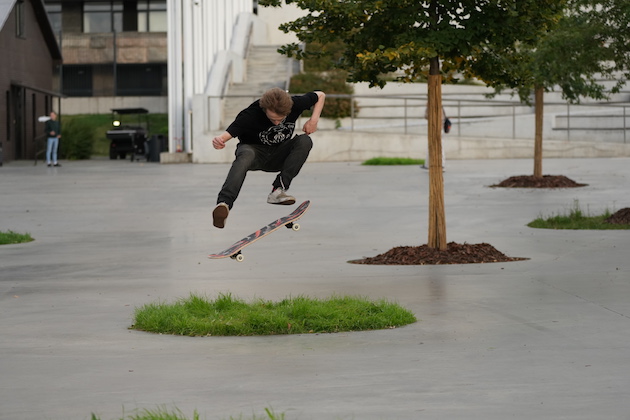
Settings: ISO 640, F5, 1/800 s, 133.0 mm equiv.
Autofocus speed is enough to shoot offhand.
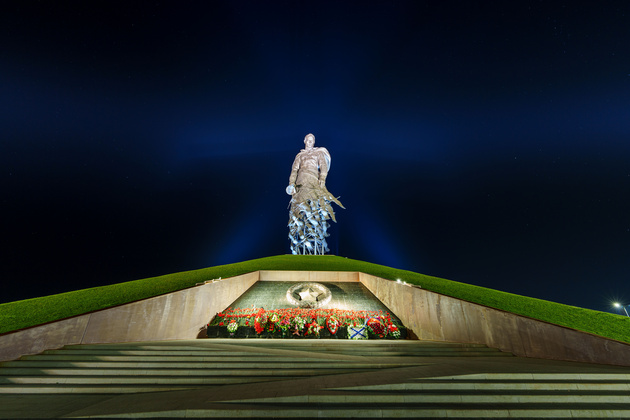
Settings: ISO 100, F4.5, 15 s, 14.0 mm equiv.
When working with manual focus, all standard tools are available: from enlarging a fragment of an image to focus-picking. The high-resolution viewfinder simplifies the task of manual focusing, and the high sensitivity of the sensor makes it easy to aim even at the stars.
Continuous Shooting
The Sony A1 specs claim the highest speed performance. But is everything really so good, or are there pitfalls? In this part of the test, we will thoroughly explore the possibilities of continuous shooting.

If you start to understand the speed characteristics of the Sony A1, you will find several factors at once that can limit the maximum speed.
The first is the RAW file type. The Sony A1 offers the photographer a choice of uncompressed RAW, lossless compressed or compressed (as we understand it, with a loss of detail).
It is compressed RAW that allows you to overclock the camera to a record 30 frames/s. So you can shoot almost any subject in all intermediate phases, and even, perhaps, with some redundancy.

Settings: ISO 1250, F5.6, 1/1000 s, 400.0 mm equiv.
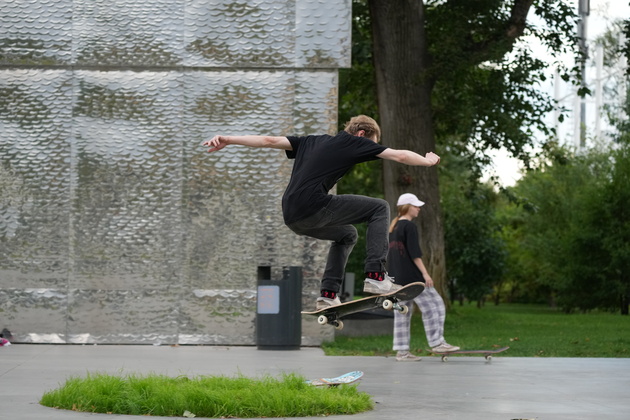
Using proprietary CF Express Type A memory cards, you can shoot up to 150 frames without slowing down. This is five seconds of recording.
Then the speed drops, but the camera continues to take pictures. Shooting in JPEG increases the buffer size to 167 frames/s, but still does not make it “infinite”. Frames are recorded on a flash drive quickly enough, after a few seconds you can shoot another long series.
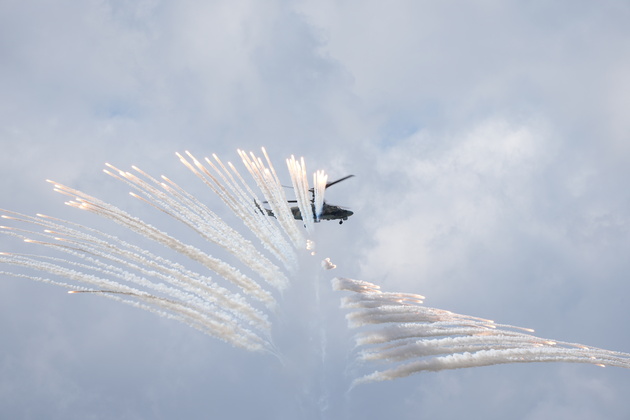
Settings: ISO 100, F11, 1/250 s, 400.0 mm equiv.
Recall that the Sony A1 has two identical combo slots for CF Express Type A and SDXC UHS-II cards.
Using fast (no, the fastest!) SD memory cards slightly reduces the buffer size by literally five frames, but the recording of such a series will take about 40 seconds, which can complicate sequential shooting. So for important events it is better to use CF Express Type A.

If you shoot uncompressed or lossless compressed RAW, the maximum speed will drop to 20fps. The buffer size will also be reduced to 85 and 100 frames, respectively.
Another factor that reduces the burst rate of a camera is the lens used.
When working with continuous autofocus, a number of lenses will limit the maximum speed to 15fps. For example, this list includes all old models, A-mount optics and (quite unexpectedly) Sony FE 85 mm f/1.4 GM portrait glass (limited to 20 fps). With other G Master lenses, the camera works fine and no surprises.
Summarizing all the information, we can say that it is quite easy to overclock the Sony A1 to 30 frames per second. You need modern lenses that correspond to the class of the camera, you need to shoot in compressed RAW or JPEG, and use the shutter only electronic. All these restrictions are quite acceptable and logical.
Video Recording
Video shooting in the Sony A1 has been given as much attention as photography. It seems that the company decided to make a flagship that meets the needs of all target audiences at once. Let’s see what the camera can do.
The Sony A1 was the first Alpha model capable of recording 8K 7680 x 4320 video at 25 or 30 fps. Of course, this is a groundwork for the future, supernova functionality, because devices for playing 8K content are still quite rare and expensive. But if the customer wants 8K, then with the help of the Sony A1 mirrorless camera, they can create such content today.
Check out a video below in 8K shooting in Cinetone:
A second use for 8K video is downsampling down to 4K for maximum detail, or the ability to crop in post.
It's better to always have such an opportunity in stock, especially if it doesn' impose any restrictions on the filming process. This is exactly the case with the Sony A1.
Recording 8K video, like 4K, is possible without external recorders, directly to a memory card. Moreover, it is not necessary to use CFexpress Type A, a high-quality SDXC card with support for the V90 or V60 speed class will do if you shoot at a lower bitrate.
The recording is made in MPEG-H format using the H.265 codec. The color depth is 10 bits, but the downsampling is only 4:2:0. The maximum bit rate is 400 Mbps. You can choose a lower one – 200 Mbps.
Below is a 8K video in HLG:
Naturally, the camera supports various gamma profiles such as S-Log3 or HLG for HDR recording.
Compared to previous models, the Cinetone profile has been added so that the A1 can be integrated into the filming process with other professional Sony video-recorders. When recording a video, autofocus and all its functions, a stabilizer, are preserved. Everything works the same way as when taking photos.
Below is a 8K shooting in S-Log3:
Now comes the fun part:
How long can you shoot in 8K?
If you use the default settings, the recording will end after about 18 minutes, and the camera will take a little time to cool down.
If you set a high auto-off temperature in the settings, you can record video with almost no restrictions. We managed to shoot a video with a duration of 1 hour and 24 minutes and 255 GB. Perhaps the camera could shoot further, but at the same time the space on the memory card and the battery charge came to an end.
Other interesting features include 4K shooting at up to 100/120 fps. And in S&Q mode, such a video can immediately be recorded in slow motion.
Slow Motion in 4K looks very impressive! Check it out below:
On such slow motion videos, you can clearly see how autofocus works. Just like with photos, it doesn’t require additional actions from the operator, the AF finds the main subject itself and keeps it in focus.
Pay attention to the background details as well. Even with very fast panning, there’s no rolling shutter effect. For this, we will once again say thanks to the high readout speed of the sensor.
The 4K can be recorded from both full-width sensor and Super 35 (APS-C) area, including effective digital image stabilization.
Supports 4:2:2, 10-bit, bitrate up to 280 Mbps, and RAW recording to an external recorder via HDMI. In short, 4K capabilities are pumped to the fullest here.
The Sony Alpha 1 list of video capabilities is a good compromise between great and the best. A comprehensive set of 4K shooting capabilities are augmented by easy-to-use 8K video.
It can be opened on almost any computer, no additional software and high powers, specific cards or an external recorder are required. But you can’t get RAW video in this resolution either.
Additional Features
Control
By releasing the powerful flagship of the Alpha line, Sony engineers took a rather bold step: they didn’t give it a catchy individual appearance. Even an experienced photographer will not distinguish a “one” from the last “seven” and much less a “nine” at arm’s length.
When comparing A1 to the Sony A9 II model, they look very similar, like two drops of water.

Controls are standard for Sony cameras. It is based primarily on on-screen hotkey submenus.
Need to change a parameter? Press the button and then rotate one of the control dials, use the joystick or navipad – which is more convenient. There is direct access to the main exposure parameters, as well as the position of the AF point.
Almost all the buttons in the camera can be reprogrammed, so this approach is more than appropriate. An experienced photographer can customize the camera to suit his needs, even if his use cases are very exotic.
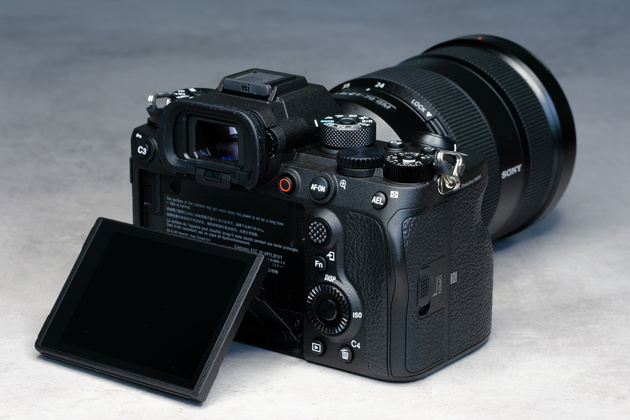

The touch interface in shooting mode is used to specify an AF point or enable tracking. In all menus and submenus, the screen also responds to touches, allows you to scroll through lists of functions; in photo viewing mode, you can scroll and enlarge with gestures.
The camera menu is of a “new” design, as we have already seen on the Sony A7S III.
In addition to adapting for touch control, it has a more streamlined and understandable structure, an updated design with colored zones for each group of settings, and a more pronounced hierarchy. Subjectively, it is perceived easier and more understandable than in older cameras of the brand.
LiveView
The pride of the Alpha 1 is an electronic viewfinder with a huge resolution of 9.44 million pixels by modern standards. Its magnification is 0.9x with 100% coverage of the frame area. It’s really big.
The detail is so high that the picture is perceived as vivid. Individual pixels can be seen only on interface elements (for example, on an electronic level indicator).
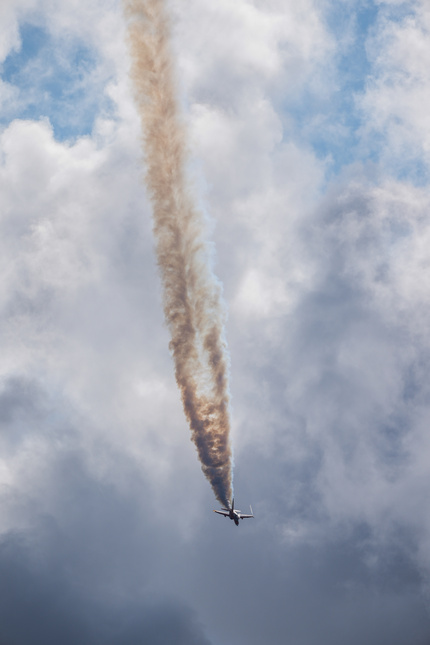
Settings: ISO 160, F5.6, 1/2500 s, 391.0 mm equiv.
The refresh rate is also very high, you won’t fix the display lag by the eye. But if you want more, you can enable an increased refresh rate in the menu – up to 240 times per second!
At the same time, the resolution of the viewfinder is formally reduced, but the difference is difficult to notice. But dynamic scenes don’t cause any issues when displayed: the image is not blurry, doesn’t strobe. It’s really nice to work with such a viewfinder.

Against this background, the camera screen looks pale.
The resolution of 1.44 million pixels looks insufficient for a camera of this level, and the images on it are perceived as losing compared to what the photographer will see later on a professional monitor. The capabilities of the camera screen are sufficient only for preliminary assessment of frames or framing during shooting.
Battery
The Sony A1 camera is powered by a proprietary NP-FZ100 battery. The official resource, measured according to the CIPA method, is declared at the level of 530/430 frames using the screen or viewfinder, respectively. Not that big for the pro segment.
But let’s not forget the VG-C4EM battery grip, which holds two batteries. For reportage shooting, this accessory is a necessity!

In practice, the resource of one charge doesn’t look so modest at all. In real conditions, we were able to shoot up to 1350 frames in 5 hours on a single battery charge with an active change of settings, as well as viewing a photo on the screen.
When working in series, the battery lasted for about 3.5 hours of shooting and 6000 frames.

Settings: ISO 100, F4, 1 s, 14.0 mm equiv.
In addition, the camera can be powered and charged via USB. There is support for PD, that is, with a powerful source of energy, fast charging is available. In an hour, we managed to charge the battery from 50% to 99%.
Stabilization
A built-in 5-axis sensor-shift stabilizer allows you to get rid of blur at near-critical exposures and get truly pixel-by-pixel sharpness in images. And for this alone, a huge thank you. Vibrations along five axes are compensated: angular along two axes, linear along two axes (typical for shooting from a short distance) and rotational around the optical axis.
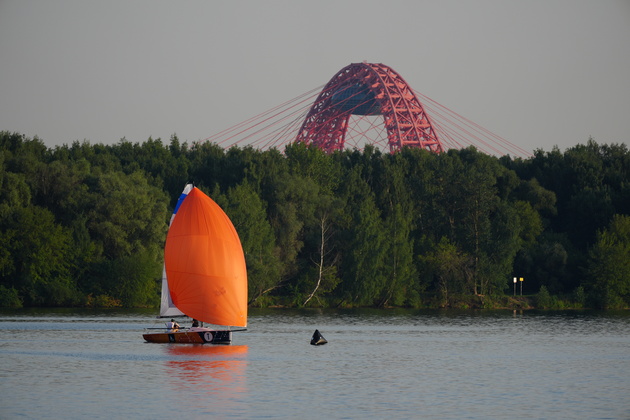
Settings: ISO 200, F5.6, 1/400 s, 400.0 mm equiv.
Moreover, when working with static scenes without a tripod, it allows shutter speeds much slower than critical ones. So, with a 35mm lens handheld, all shots in bursts up to ¼ inclusive were sharp.
It was possible to get at least one of the three sharp images up to a shutter speed of 1s. And only at a shutter speed of 2 seconds, blur, albeit small, was guaranteed to be present in all pictures in the series.

Settings: ISO 100, F2.2, 1/4 s, 35.0 mm equiv.
The stabilization system is also responsible for pixel-shift multi-frame shooting. The camera can take up to 16 frames, which are then combined on a computer into one with a resolution of 199 megapixels.

Settings: ISO 100, F11, 1/3 s, 35.0 mm equiv.
Interface & Wireless Capabilities
The Sony A1 has received a range of interfaces to suit almost any professional. Let’s start with memory cards. The camera has two identical combo slots, each of which supports both SD and CFexpress Type A cards.
It’s worth noting that the choice of cards doesn’t impose restrictions on the functionality of the camera. The SD-class V90 can record 8K video at the maximum bitrate. But in the case of continuous shooting, CFexpress Type A is preferable, since with them the camera buffer is released much faster.
No joke, one and a half hundred 50-megapixel RAW!
For video recording, a microphone input and a headphone output in the form of 3.5 mm jacks are provided. Supported work with proprietary microphones installed in the shoe, including the digital interface. A full-size HDMI connector is used to connect an external recorder or monitor. Studio photographers will appreciate the presence of a separate sync terminal.

Traditionally, the latest Alpha models have two USB ports at once. One is already outdated micro-USB, the other is Type-C.
The presence of two connectors is easily explained. Micro-USB is used to connect the camera with some accessories using the proprietary Multi Interface Shoe protocol. Charging and power, as well as a high-speed USB 3.2 Type-C connection (up to 10 Gb/s) is provided only by the USB-C connector.
High speeds of the USB-connector are especially important when the camera is “tethered” to a computer. For this there is a proprietary application Imaging Edge.
Finally, there is an RJ-45 connector with 1000base-T Ethernet support for professional sports reporters or for studio work in large production. Thanks to it, the camera can be used, for example, for remote shooting in stadiums, providing a remote synchronized shutter release.
The secure file transfer protocol FTPS is supported, which provides data encryption using SSL or TLS. This transmission works over Wi-Fi, LAN, or even via a USB modem.
Wireless capabilities are also very broad.
The camera supports IEEE 802.11a/b/g/n/ac in the 2.4 and 5 GHz bands, which allows you to quickly drop captured frames, including on FPT. On the 5GHz band, the Sony A1 uses 2×2 MIMO technology for faster transmission speeds. For other manufacturers, such capabilities are only available using an external Wi-Fi transmitter.
Wireless remote control is provided from both computers and smartphones. And thanks to the powerful wireless module, it works very quickly, with virtually no lags in the image on the computer display. Photos are also transferred very quickly.
Final Thoughts
The Sony A1 is a camera that managed to surprise.
We’ve already seen Sony cameras intended to be the first professional reportage mirrorless cameras. But Sony A1 has become a real universal flagship, which combines not only a very high (record at the time of this writing) shooting speed, but also a huge image resolution, as well as the ability to shoot 8K video.

Settings: ISO 100, F8, 4s, 35.0 mm equiv.
As a result of our big test, we found out the main thing: all these characteristics not only look impressive on paper, but also work effectively in real life.
The camera is really capable of shooting 50MP RAW files at 30fps. Perhaps I would like to see a slightly larger buffer (now it holds about 150 shots), but during the test, its volume was always enough.
8K 10-bit video definitely works. The camera doesn’t overheat and can shoot for almost an hour and a half continuously. Files are saved to the memory card, even on a simple SDXC V90.
If you want more exotic shooting settings, then all of them are available for 4K resolution: up to 120 fps, 4:2:2 and RAW video to an external recorder.

Settings: ISO 100, F1.4, 1/4000 sec, 35.0 mm equiv.
Autofocus is good enough to virtually eliminate manual focus point selection. The camera focuses on the eyes of people, animals and birds accurately. For complex scenes, you can use real-time scene tracking with one touch.
The stabilization is in place, just like in previous Sony models. It not only helps to shoot at increased exposures, but also ensures against micro-lubrication. Images shot on Sony Alpha 1 are stunningly sharp.

Settings: ISO 1600, F1.8, 30 s, 14.0 mm equiv.
At the time of this writing, this is probably the most advanced and at the same time versatile imaging tool in the world. If some of its characteristics can surpass some other devices, then all together – no.
There are some subtle points in the Sony A1 that I would like to improve. However, these shortcomings don’t limit the functionality of the camera, but only prove a simple truth: the ideal is unattainable.

Pros
- 50-megapixel full-frame sensor
- high image quality up to ISO 32,000
- wide dynamic range
- continuous shooting speed in RAW up to 30 frames/s
- 8K video recording at 30 fps
- 4K shooting up to 120 fps
- excellent autofocus in photos and videos
- recognition of faces and eyes of people, animals, birds
- effective image stabilization
- distortionless electronic shutter
- shutter speeds up to 1/32000s
- silent operating mode
- electronic viewfinder 9.44 million dots
- the ability to increase the refresh rate of the viewfinder up to 240 Hz
- two combo SD UHS-II / CFexpress Type A card slots
- high autonomy indicators for a mirrorless
- USB charging and powered with PD support
- Wi-Fi with 2×2 MIMO support
- Ethernet 1000base-T
- the ability to work with FTP servers
Cons
- sufficient for work, but not very large buffer for continuous shooting
- low resolution screen
- maximum shooting speed is not achievable with every lens
- proprietary CFexpress Type A memory card format
Where to Buy Online?
- Amazon
- BH Photo Video
- Adorama (financing may be available)
